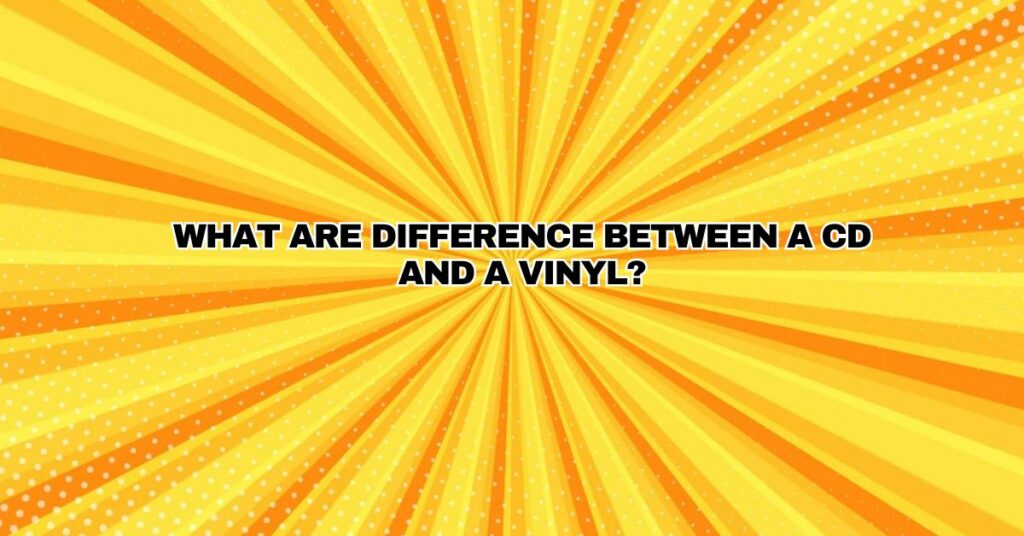In the realm of music playback, two formats have long vied for audiophiles’ attention and devotion: the Compact Disc (CD) and the vinyl record. These formats offer distinct listening experiences, and their differences extend beyond just the physical medium. In this comprehensive guide, we will explore the differences between CD and vinyl, delving into aspects like sound quality, tactile appeal, production methods, and the enduring allure that each format brings to music enthusiasts.
Sound Quality:
- CD: Compact Discs offer digital audio playback, which is characterized by high fidelity and a low noise floor. CDs provide accurate reproduction of the original recording, with minimal signal degradation over time.
- Vinyl: Vinyl records produce analog audio, known for their warm, rich, and textured sound. Vinyl’s analog nature can introduce subtle imperfections, such as surface noise and pops, but many audiophiles find these characteristics endearing.
Tactile Experience:
- CD: CDs are compact, lightweight, and easy to handle. They offer a clean, modern appearance with their jewel cases and printed booklets. However, the tactile experience is generally less involved compared to vinyl.
- Vinyl: Vinyl records come in various sizes and weights, with large album artwork and often elaborate packaging. Handling vinyl involves carefully placing the record on the turntable, cueing the tonearm, and flipping sides. The tactile ritual of playing vinyl is a significant part of its appeal.
Album Art and Packaging:
- CD: CD booklets usually contain album artwork, lyrics, and additional information. While they offer a convenient way to include supplementary content, the smaller size can limit the visual impact of the artwork.
- Vinyl: Vinyl records often feature larger, visually striking album art and packaging, making them a preferred choice for collectors and artists who want to showcase their work. The expansive canvas of a vinyl jacket allows for creativity and artistic expression.
Production and Manufacturing:
- CD: CDs are mass-produced using industrial replication techniques. The production process is highly automated, resulting in consistent quality across copies.
- Vinyl: Vinyl production involves multiple steps, including mastering, plating, pressing, and quality control. Each vinyl record is essentially a unique physical object, subject to minor variations due to the manual nature of the process. This can lead to records having individual characteristics, contributing to their appeal.
Durability and Longevity:
- CD: CDs are generally more durable than vinyl records. They are resistant to physical damage, such as scratches and warping. However, they can deteriorate over time due to oxidation or disc rot, rendering them unplayable.
- Vinyl: Vinyl records are susceptible to wear and tear, especially if mishandled. Scratches, dust, and warping can affect playability. However, well-maintained vinyl records can remain playable for decades, and some collectors prize the signs of aging as part of the format’s charm.
Collector’s Value:
- CD: While certain rare and limited-edition CDs can hold collector’s value, the overall collectibility of CDs is generally lower than that of vinyl records.
- Vinyl: Vinyl records, especially rare, vintage, or limited-edition releases, can command high prices in the collector’s market. Their physicality and unique characteristics make them sought-after items.
Conclusion:
CDs and vinyl records offer distinct listening experiences and cater to different preferences. CD technology delivers pristine digital sound, while vinyl records bring a tactile and analog charm to the listening experience. Ultimately, the choice between CD and vinyl often comes down to personal taste, nostalgia, and the desire for a specific listening ritual. Both formats continue to coexist, each with its dedicated community of enthusiasts who appreciate their unique qualities and enduring appeal in the world of music.


